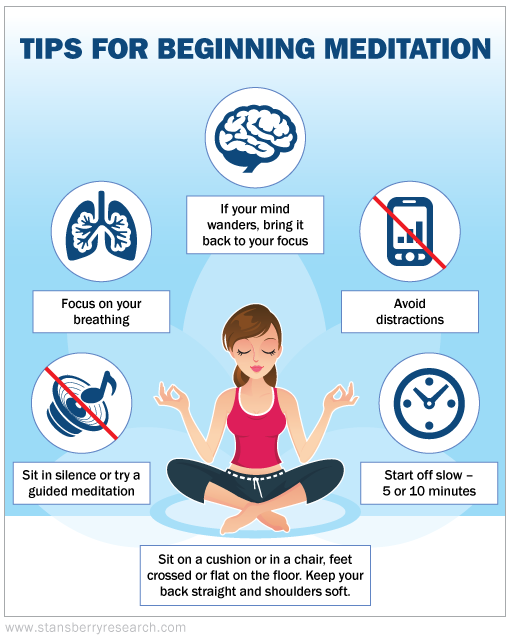If you're reading this issue, chances are that you or someone you know has battled depression.
About 16 million Americans have something called major depressive disorder (MDD). It's characterized by changes in sleep (sleeping too much or insomnia), lack of concentration, loss of interest in activities, feelings of hopelessness and sadness, or thoughts of self-harm that interfere with daily living and persist for two weeks or more.
But here's the thing... Researchers estimate at least 12 million Americans suffer from subclinical depression. But the lifetime risk is even higher, meaning millions more could suffer from it, often without reporting it. Think of it as MDD being high blood pressure or hypertension. Subclinical depression is like pre-hypertension... you're not at the diagnostic level yet, but if it gets more severe or lasts too long, you'll develop the more serious disease.
In either case, you're suffering from the symptoms.
That's why we were interested in a new study just published in the Annals of Family Medicine.
Researchers in Hong Kong set up a randomized treatment program for folks diagnosed with subclinical depression. Half received educational advice, but no direct interventions. The other half took part in weekly sessions of mindfulness meditation. The sessions lasted two hours and ran for eight weeks.
One year later, those who had participated in the meditation workshops were far less likely to develop MDD. The rate was 10.8% versus 26.8% in the non-intervention group.
We've long advocated for meditation. It's an easy way to reduce your stress levels and ease pain. In fact, another new paper just demonstrated that it's effective for treating chronic back pain.
The power of meditation comes from the body's "relaxation response" and how it changes our physiology. During meditation, our brain waves convert to a pattern that is as deep as sleep... and in some ways, deeper.
It is also more restful and recharging than a nap. Meditation releases chemicals that are the direct opposite of the so-called "stress hormones." These chemicals and hormones trigger pathways of healing and regeneration.
[optin_form id="73"]
We're still trying to understand exactly how meditation, particularly mindfulness meditation, releases these chemicals. But one of them is serotonin, which helps alleviate symptoms of depression.
One key idea is that meditation fights stress.
Stress causes real, measurable, physical damage to your brain cells. By engaging in a focused stress-busting activity, you reduce your inflammation and help those cells stay strong. We know untreated stress contributes to episodic depression, which is one reason we recommend incorporating stress-management tips in your daily life.
Mindfulness meditation is one type of meditation. Mindfulness is all over the news every week as a buzzword, but it actually has legitimate health benefits. Mindfulness means focusing on staying in the present. It takes time to hone this skill, but it brings plenty of stress-busting benefits. In fact, it's a great technique for reducing anxiety, which often accompanies depression.
To get started with meditation, follow these tips:
1. Sitting. You can choose to sit in the traditional "lotus" pose on a cushion, in which you cross your legs and rest your feet on your knees. But I find it easier to sit up straight in a chair with my neck and shoulders balanced and relaxed (this is the hardest part), feet on the floor, and hands resting on my lap or by my sides.
2. Distractions. Make sure to meditate in an area free from interruptions. I find that turning off all electronics and dimming the lights helps me to relax and focus.
3. Mind Wandering. Your mind will wander, particularly when you just start out. Don't feel discouraged or dwell on it. When you feel your mind begin to wander, acknowledge it and return your attention to your breathing.
4. Breathing. The goal of meditation is to focus your attention more and more, eventually shutting out all distractions. A good way to start is to focus on your breathing. Focus on each part of your body and how it changes when you breathe in and out. You can also count your breaths as a way to focus.
5. Guided Meditations. These are free and easy to access on the Internet. The auditory recordings can be anything from soothing music to instructors walking you through guided imagery or specific messages to help with anxiety, self-esteem, etc.
6. Time. Start off slow. If you can only focus for five minutes a day, start there. After a few sessions, bump it up to 10 minutes. Then, gradually increase as you like. Some people meditate just 10 minutes a day, and some can meditate for an hour or more.
Take the time to focus and meditate today. And if you have trouble sitting still, try a mindfulness-based activity like filling in a coloring book or walking in a garden. You'll find your stress is lower and your mood is boosted in just a few weeks.
What We're Reading...
- Did you miss it? Another antidepressant – your gut.
- More on the lower-back pain study.
- Something different: Lifesaving milk from a platypus?
Here's to our health, wealth, and a great retirement,
Dr. David Eifrig and the Health & Wealth Bulletin Research Team
March 20, 2018

